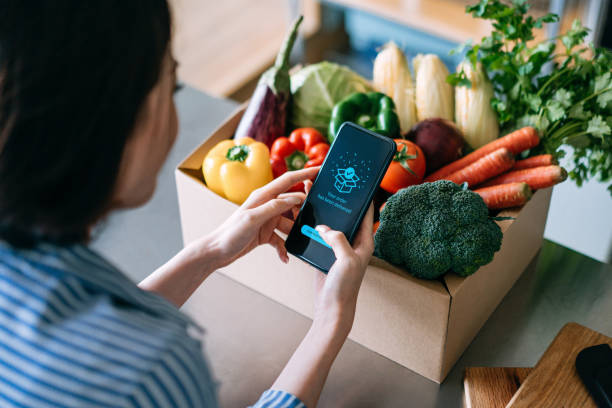"From Local to Digital: The Retail Software Evolution in Indian Marketplaces"
"From Local to Digital: The Retail Software Evolution in Indian Marketplaces"
Blog Article
In the vibrant chaos of India’s local markets—where bargaining thrives, shopkeepers know customers by name, and daily commerce pulsates through narrow lanes—a silent revolution is underway. From neighborhood kirana stores to family-run apparel outlets, the move from manual to digital operations is redefining how local Indian retail works. At the heart of this transformation is the widespread adoption of retail software.

Retail software isn’t just for malls and multinational chains anymore. Today, it’s becoming an essential tool for survival, growth, and customer engagement in even the most traditional Indian marketplaces. This blog explores the evolution of retail software across India’s local bazaars—tracing how digital solutions are transforming these hubs from ground zero of commerce to tech-empowered business ecosystems.
???? Traditional Indian Retail: The Starting Point
Historically, Indian retail—especially in local marketplaces like Sikanderpur, Daliganj, Rani Bagh, and INA Market—has been rooted in trust, familiarity, and physical records. Business was run using:
Handwritten ledgers and khata books
Cash transactions with manual change handling
Verbal promises for credit sales
No structured stock tracking or reporting
While this model worked for decades, rapid urbanization, rising consumer expectations, and digital payment trends have exposed its inefficiencies. That’s where the digital shift began.
???? The Rise of Retail Software: What Changed?
The real inflection point came with the demonetization in 2016, followed by the COVID-19 pandemic. These events pushed small businesses to embrace UPI payments, digital billing, and inventory software—no longer optional, but necessary for staying afloat.
Today, retail software includes tools that help store owners:
Manage billing and GST-compliant invoicing
Track inventory in real-time
Accept UPI, cards, and mobile payments
Analyze sales and customer behavior
Maintain digital khata or credit records
Send invoices and marketing messages on WhatsApp
These functions have transformed how local businesses interact with both products and people.
????From Sikanderpur to Daliganj: Case Studies in Digital Adoption
???? Sikanderpur Market (Gurgaon)
Situated near Gurgaon’s corporate zone, Sikanderpur shops now cater to a tech-savvy population. Retailers here use software like Vyapar and GoFrugal for barcode billing and inventory control.
Retail Software Benefits:
Faster billing during rush hours
Integration with WhatsApp for e-invoicing
UPI-based loyalty rewards for repeat buyers
???? Daliganj Market (Lucknow)
This traditional market is a hub for stationery, uniforms, and household items. Shopkeepers are using tools like Marg ERP and myBillBook.
Digital Advantages:
Efficient handling of bulk school orders
Stock alerts to avoid running out during peak seasons
Tax filing automation via GST-ready billing
???? Rani Bagh & INA Market (Delhi)
Known for garments and spices respectively, both markets are now moving from handwritten bills to POS systems. Small retailers in Rani Bagh are using RetailCore, while INA Market food vendors are adopting mobile billing apps.
???? Top Retail Software Powering the Transformation
Here are some of the most popular retail tech platforms making inroads into India’s local marketplaces:
| Software | Features | Ideal For |
|---|---|---|
| Vyapar | Mobile billing, stock reports, GST, SMS invoices | Kirana & Electronics Stores |
| Marg ERP | Bulk inventory, wholesale management, tax filing | Wholesale & Stationery Shops |
| GoFrugal | POS, CRM, analytics, mobile app support | Apparel & General Stores |
| myBillBook | Digital khata, billing, customer reminders | Small Retailers, Tailoring Shops |
| RetailCore | Fashion store POS, barcoding, returns management | Garment Shops, Boutiques |
???? The Impact: Local Retail, National Potential
✅ Operational Efficiency
Retail software has dramatically reduced the time required for:
Generating bills (from 5 mins to under 1 min)
Stock audits (from weekly manual checks to real-time views)
Monthly GST returns (now automated)
✅ Increased Sales
With better customer retention tools (e.g., loyalty points, offers via SMS/WhatsApp), small retailers are seeing a 10%–30% rise in revenue.
✅ Better Financial Transparency
Digital records now help small retailers build creditworthiness, making it easier to apply for business loans or participate in government schemes.
✅ Enhanced Customer Experience
Customers enjoy faster billing, UPI payments, digital receipts, and home delivery updates.
???? Challenges on the Path to Digitization
Despite the benefits, the journey isn’t without hurdles:
1. Resistance to Change
Older business owners often fear technology will be difficult to use or too expensive.
Solution: Retail software now comes with simple interfaces, free trials, and vernacular language support.
2. Connectivity Issues
Markets in smaller towns still face poor internet.
Solution: Offline functionality and cloud-syncing capabilities address this problem.
3. Training & Support
Many retailers require handholding during the initial days.
Solution: Providers offer free setup, phone support, and video tutorials to ease onboarding.
Report this page